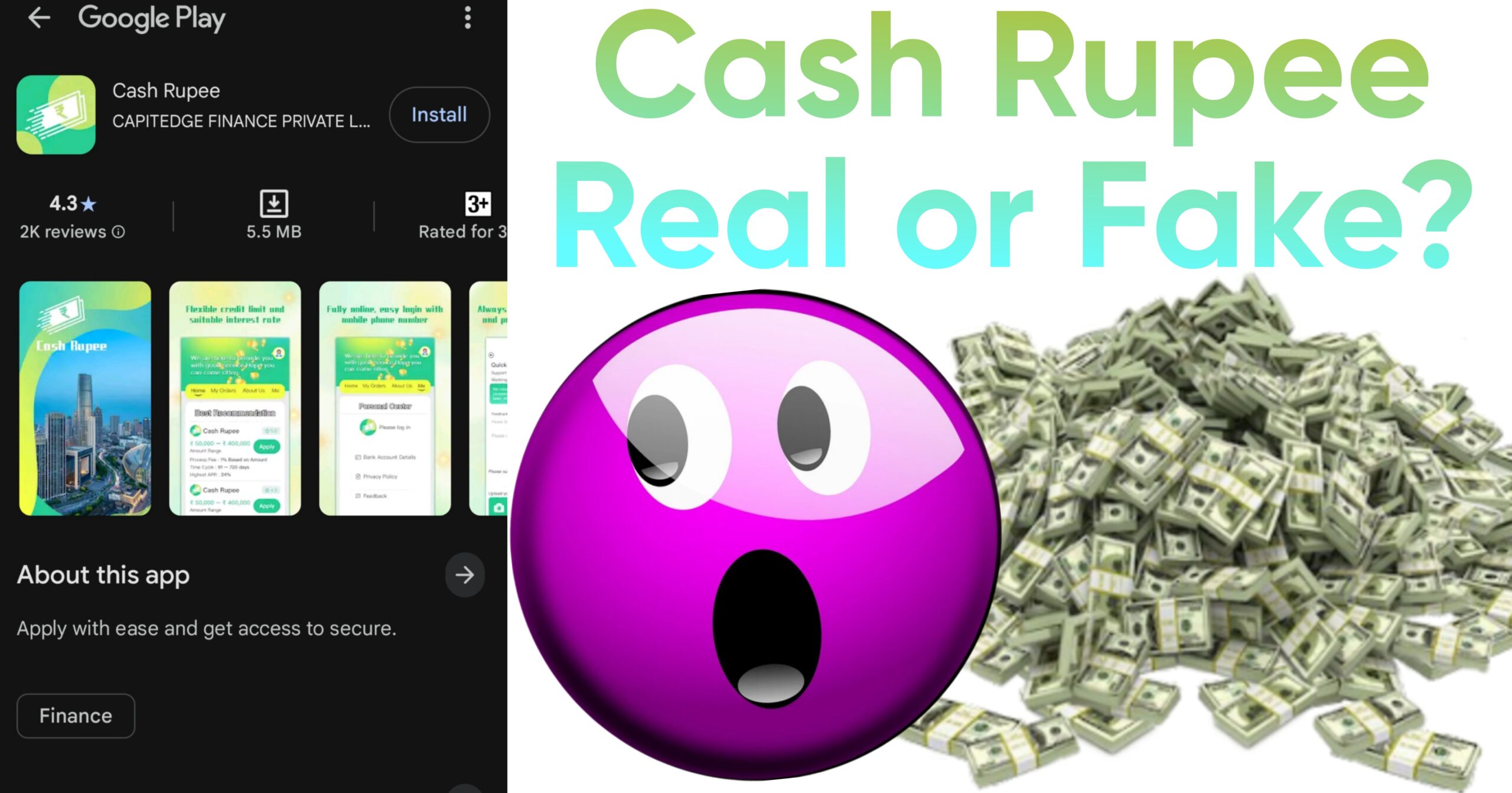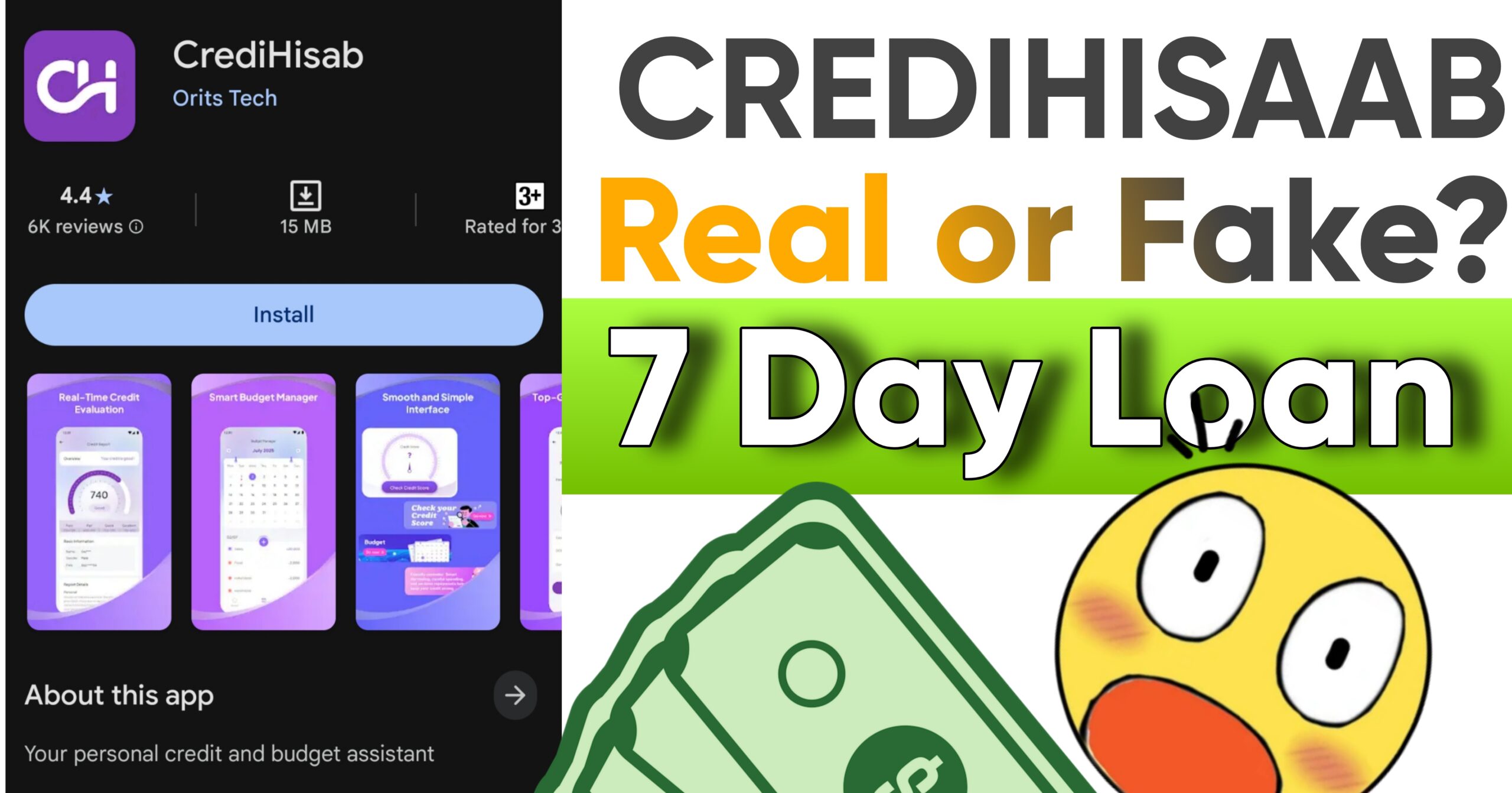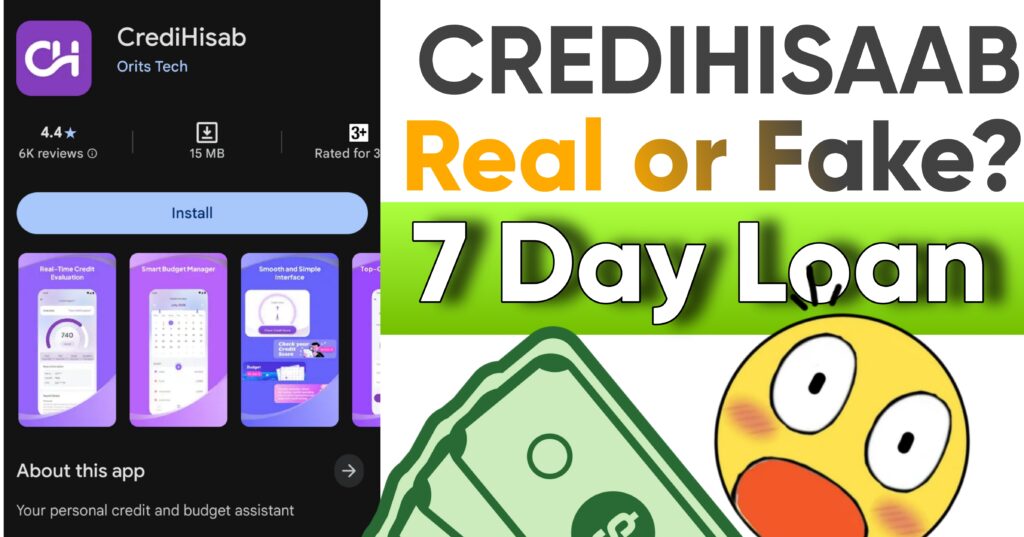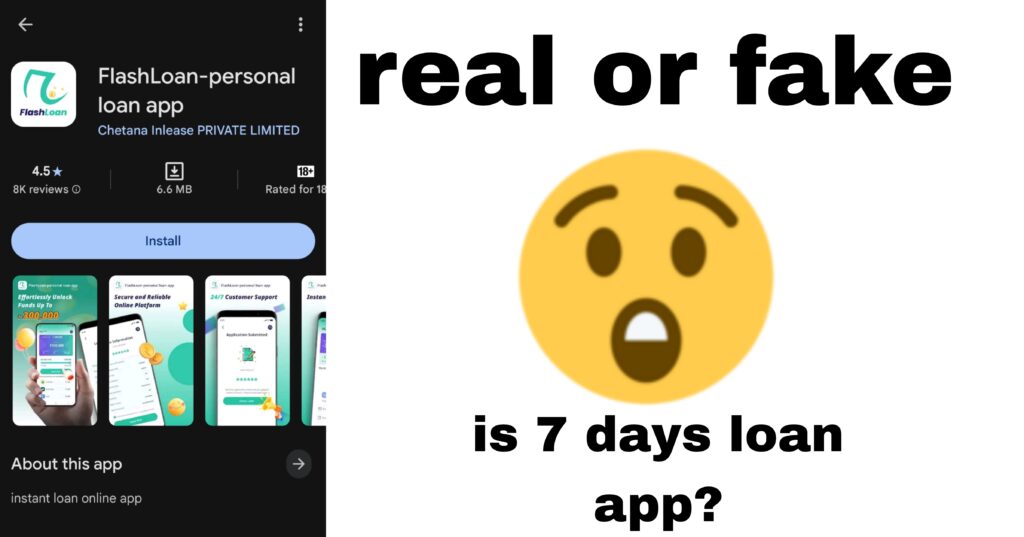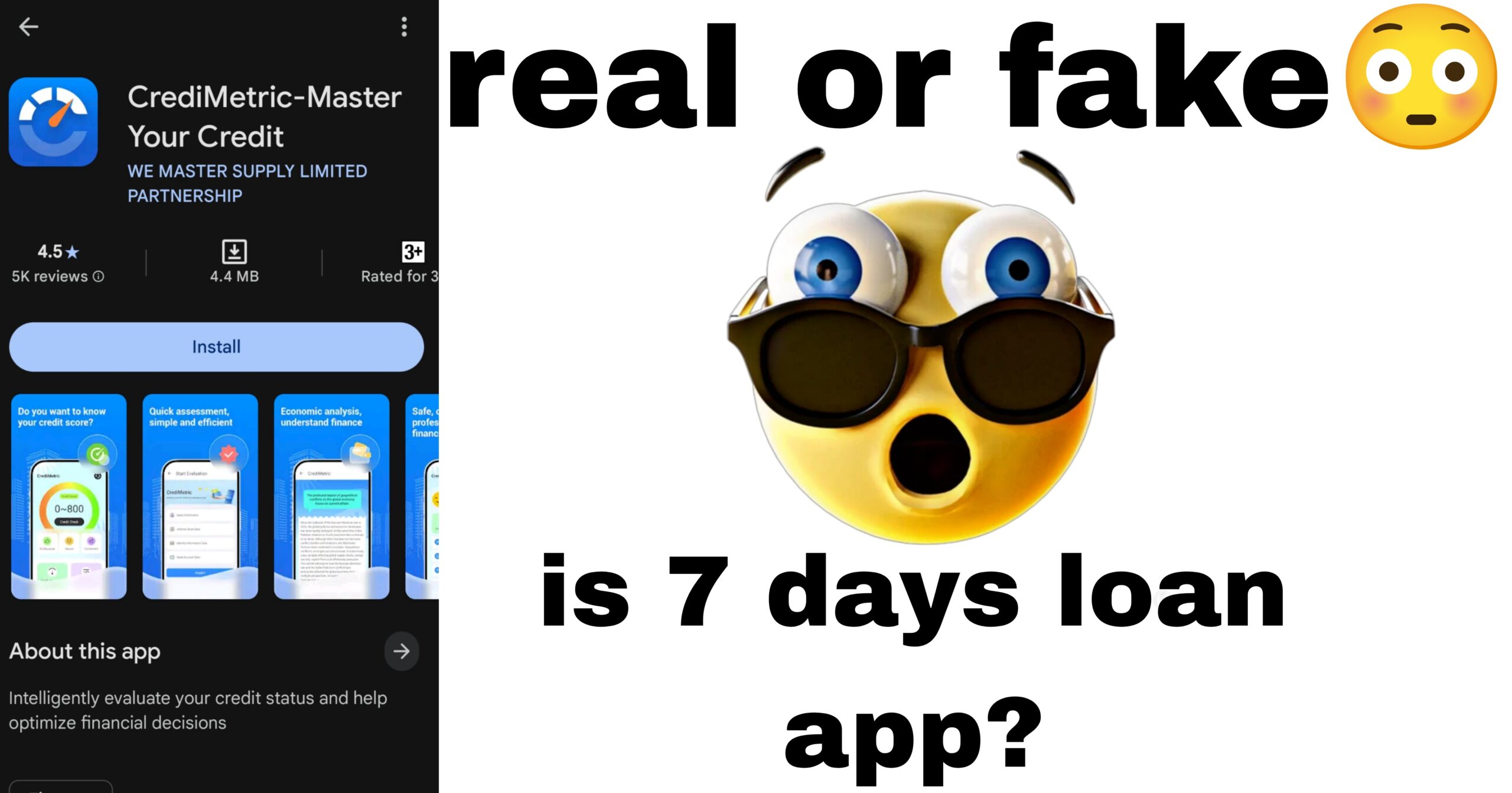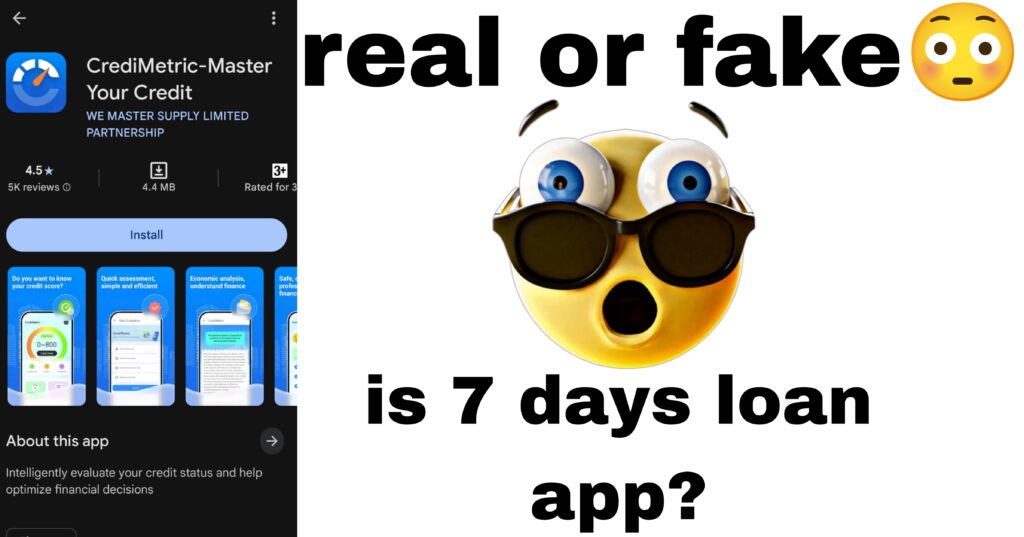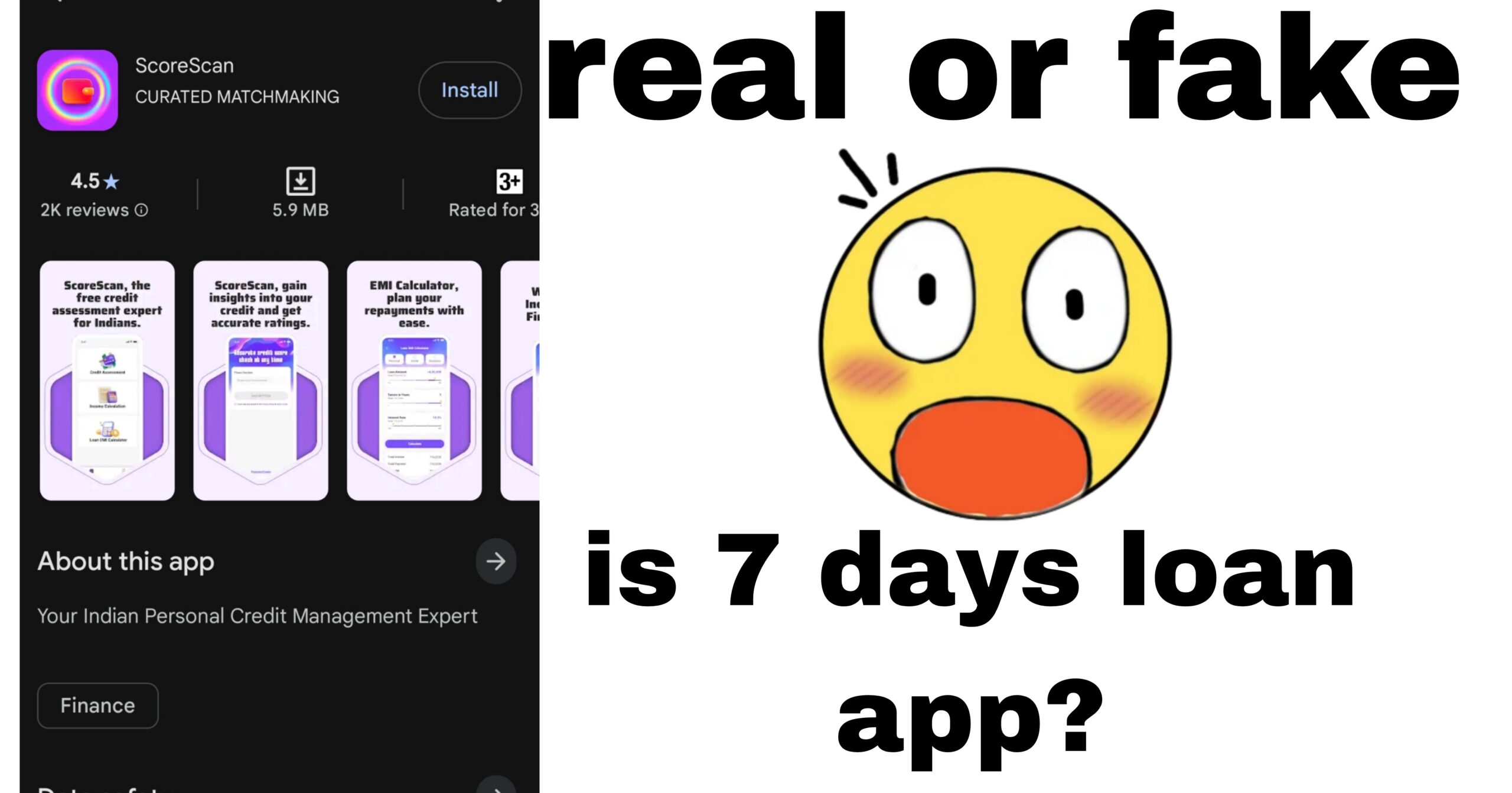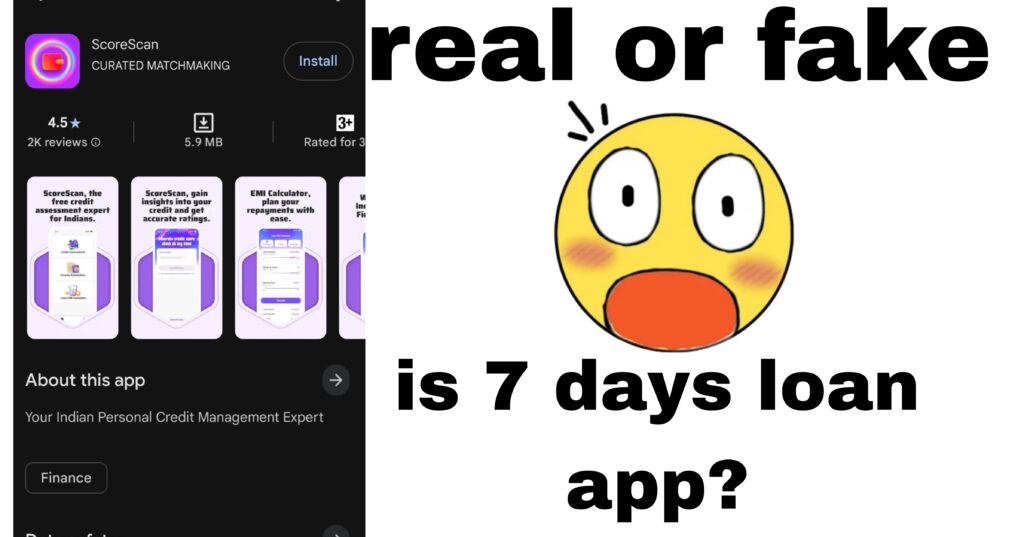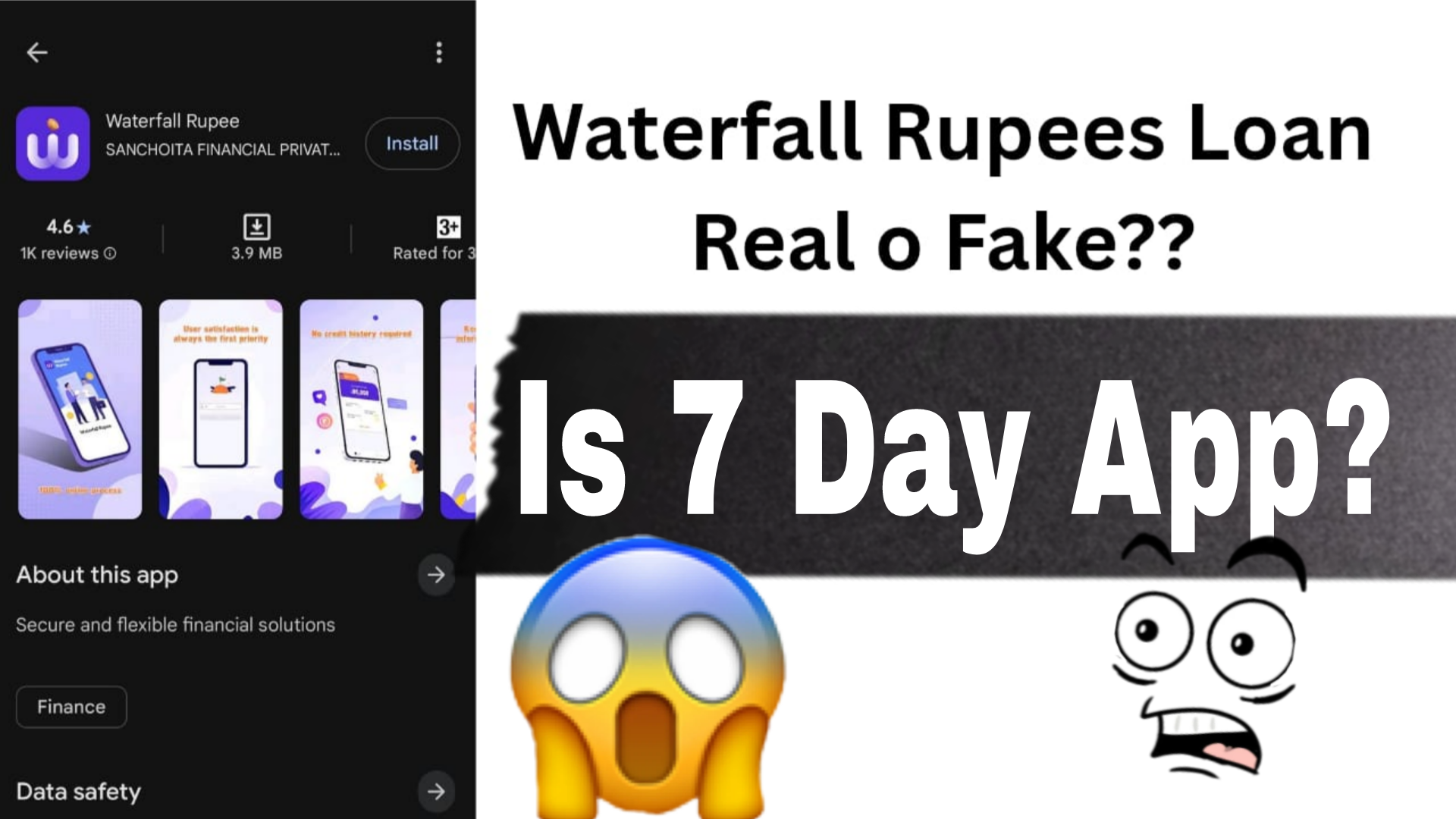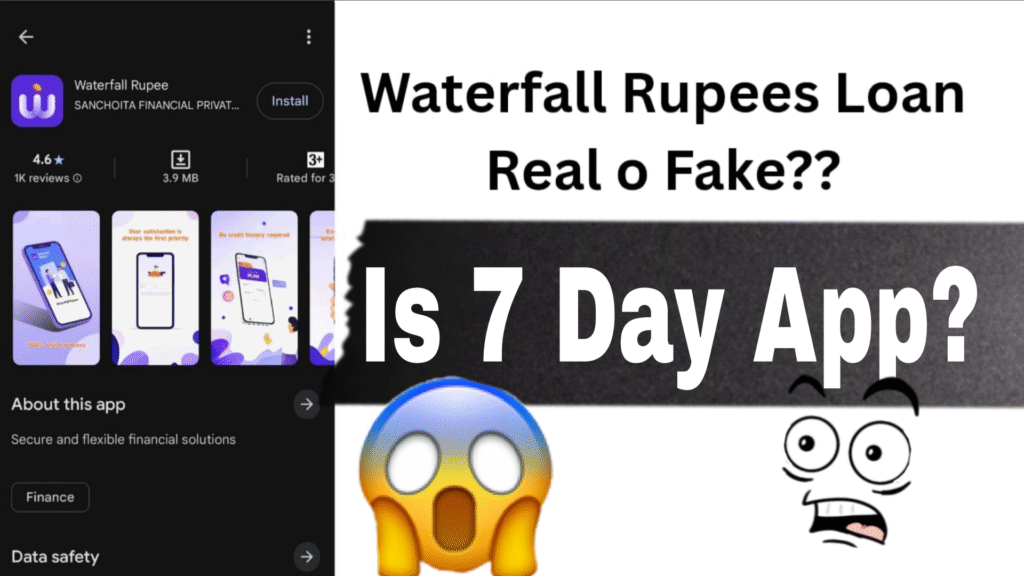Cash Rupee Loan App Real or Fake?Cash Rupee Loan App Review 2025:
In the rapidly evolving world of digital lending, apps like Cash Rupee Loan App promise quick and easy access to loans, targeting individuals in urgent need of financial assistance. Marketed as a platform that connects borrowers with Century Vehicleloans Private Limited, an RBI-registered Non-Banking Financial Company (NBFC), Cash Rupee Loan App claims to offer secure and transparent loan services. However, a growing number of user reviews and complaints raise serious concerns about its legitimacy, transparency, and practices. This article dives deep into Cash Rupee’s operations, user experiences, and red flags to determine whether it is a trustworthy platform or a potential scam. By examining its app description, loan parameters, user reviews, and broader context of fake loan apps in India, we aim to provide a comprehensive analysis.
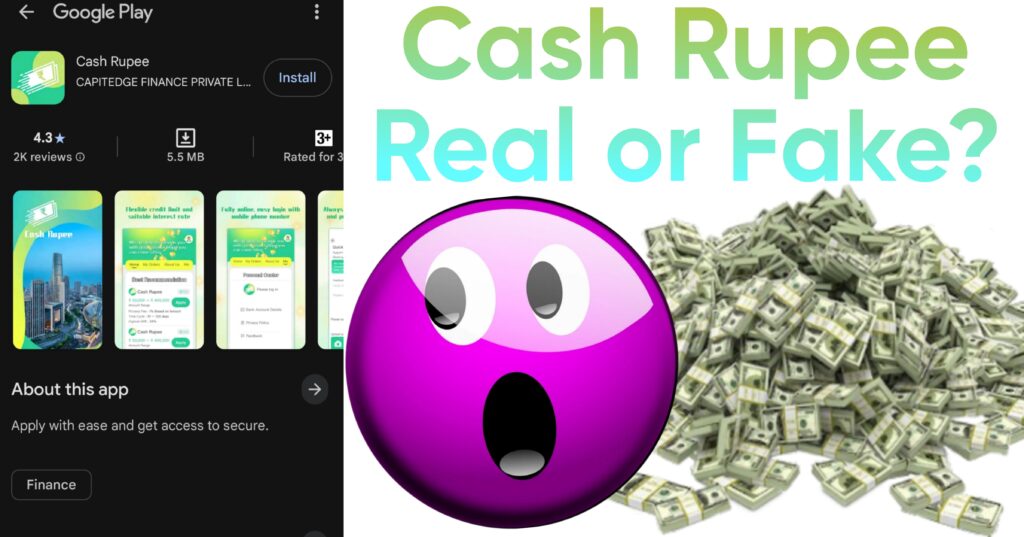
Understanding Cash Rupee Loan App: What the App Claims
According to its description, Cash Rupee Loan App is a digital platform that facilitates loans through Century Vehicleloans Private Limited, an RBI-registered NBFC. The app itself does not issue credit; instead, it acts as an intermediary, with all loan contracts, disbursements, and collections handled by the NBFC under applicable regulations. The app outlines the following core loan parameters:
- Loan Amount: ₹50,000 to ₹400,000
- Tenure: 91 to 720 days
- Maximum Annual Percentage Rate (APR): 24%
- Processing Fee: 1% of the sanctioned principal
- GST on the Fee: 18%
- Borrower Age Range: 20–60 years
To illustrate, the app provides a representative cost example for a ₹250,000 loan for 180 days at the maximum APR of 24%:
- Processing Fee: ₹2,500 (1% of ₹250,000)
- GST on the Fee: ₹450 (18% of ₹2,500)
- Amount Credited: ₹247,050 (₹250,000 – ₹2,500 – ₹450)
- Interest: ₹29,589 (calculated as ₹250,000 × 24% × 180/365)
- Total Repayment: ₹279,589 (₹250,000 + ₹29,589)
On the surface, these terms appear transparent, with clear details about interest rates, fees, and repayment calculations. The association with an RBI-registered NBFC like Century Vehicleloans Private Limited further suggests legitimacy, as RBI registration implies regulatory oversight and adherence to fair lending practices. However, user reviews and reported experiences paint a starkly different picture, raising questions about whether Cash Rupee lives up to its claims.
Know about 7 Day loan app:
User Reviews: A Troubling Pattern of Complaints
A closer look at user reviews from 2025 reveals a consistent pattern of allegations that point to potential fraudulent practices. Here are some of the key complaints:
- No Repayment Option:
- A review from July 11, 2025, describes Cash Rupee as a “total fraud app” with no functional repayment option. The reviewer notes that the repayment button on the app’s payment screen is not clickable, leaving users with only one option: extending the loan repayment date for double the amount. This lack of a repayment mechanism is a significant red flag, as legitimate loan apps are required to provide clear and accessible repayment options under RBI guidelines.
- Blackmail and Harassment:
- Multiple reviews, including those from July 15, July 20, and July 23, 2025, accuse Cash Rupee’s recovery agents of using abusive tactics, including blackmail and threats to share manipulated or nude images with borrowers’ contact lists. For instance, Antony Nobleson (July 20, 2025) recounts being blackmailed by a recovery agent who demanded repayment but failed to update the app after receiving payment. Another user (July 23, 2025) reports threats to send nude pictures to their contacts if they refused to pay via unverified UPI IDs. Such coercive tactics are illegal under RBI regulations, which prohibit harassment and misuse of personal data.
- Fraudulent Transactions and Lack of Transparency:
- A reviewer from July 15, 2025, alleges that an agent instructed them to send repayment to a provided link because the app’s repayment link was not working. After making the payment, the agent blocked the user, and the payment was not reflected in the app, leaving the loan status as overdue. Another user (July 25, 2025) claims they never received a loan but were shown as having an active loan, followed by blackmail demands. These experiences suggest potential fraud, where payments are collected through unofficial channels without updating loan records.
- Suspicious Contact Numbers:
- Pankaj Patwal’s review (July 15, 2025) highlights that calls from recovery agents often originate from international numbers, including those from Pakistan. This raises concerns about the app’s operations, as legitimate RBI-registered NBFCs typically operate within India and use local contact numbers. The use of foreign numbers aligns with tactics employed by illegal loan apps, many of which operate from abroad to evade Indian regulators.
- Lack of Customer Support:
- Users frequently report that Cash Rupee provides no reliable customer support. The app lists only an email address for contact, with reviewers claiming that emails go unanswered. This lack of responsive customer service violates RBI guidelines, which mandate accessible grievance redressal mechanisms for borrowers.
- Suspiciously Positive Reviews:
- The reviewer from July 11, 2025, alleges that all 4- and 5-star ratings for Cash Rupee are paid, suggesting that positive reviews may be fabricated to boost the app’s credibility. This is a common tactic among fraudulent apps to mislead users into trusting them.
Red Flags: Why Cash Rupee Raises Concerns
The user reviews align with broader warning signs associated with fake or predatory loan apps in India. Here’s a detailed analysis of the red flags:
- Lack of Functional Repayment Mechanism:
- The absence of a clickable repayment button is a serious violation of RBI guidelines, which require lenders to provide clear and accessible repayment options. Forcing users to extend loans at double the cost suggests predatory practices designed to trap borrowers in a cycle of debt.
- Harassment and Blackmail Tactics:
- The reported use of blackmail, threats, and abusive language by recovery agents mirrors the modus operandi of illegal loan apps. According to a 2023 Al Jazeera report, predatory loan apps often access borrowers’ contacts and media files to manipulate images and blackmail users for repayment. Such tactics are explicitly prohibited by the RBI, which limits lenders’ data access to minimal personal details like name, address, and contact information.
- Unverified RBI Registration:
- While Cash Rupee claims to partner with Century Vehicleloans Private Limited, an RBI-registered NBFC, there is no publicly available evidence in the provided information to confirm the legitimacy of this NBFC or its association with the app. Legitimate apps typically provide clear details about their NBFC partners, including registration numbers verifiable on the RBI’s official website. The lack of transparency about Century Vehicleloans Private Limited raises doubts about its authenticity.
- International Operations:
- The use of foreign phone numbers, particularly from Pakistan, suggests that Cash Rupee may operate outside India’s regulatory framework. A 2020 report by The Hindu noted that many fraudulent loan apps are controlled by foreign entities, including Chinese nationals, who use Indian fronts to evade detection. This aligns with user reports of international calls and raises concerns about accountability.
- Lack of Customer Support:
- The absence of responsive customer support, with only an unresponsive email address provided, is a hallmark of fraudulent apps. RBI guidelines mandate that lenders maintain accessible grievance redressal mechanisms, including phone numbers and physical addresses. Cash Rupee’s failure to provide these suggests non-compliance with regulatory standards.
- Unsolicited Loans and Hidden Charges:
- Reports of users being shown as having active loans without receiving funds indicate potential fraud. Additionally, the practice of directing payments to unverified UPI IDs or links outside the app suggests hidden charges or scams, as legitimate lenders deduct fees from the loan amount rather than requesting upfront payments.
Broader Context: The Rise of Fake Loan Apps in India
The issues with Cash Rupee are not isolated but part of a larger problem with fake loan apps in India. According to a 2025 article by BuddyLoan, fake loan apps often lure users with promises of quick loans and minimal documentation, only to engage in data theft, harassment, and financial fraud. The RBI has taken steps to curb this menace, banning apps like Kredipe, FlyCash, and Rupee Master in 2024 for unauthorized operations, high interest rates, and data misuse. In 2023 alone, the RBI reported over 600 illicit loan apps, many of which used aggressive recovery tactics.
Google and Apple have also removed thousands of non-compliant apps from their stores, but fraudulent apps continue to proliferate, often disguised as legitimate platforms. A 2022 report by The420.in listed 274 fake loan apps under RBI and police scrutiny, including names like Cash Host, Rupee Ok, and Flash Rupee. While Cash Rupee is not explicitly listed, its reported practices align closely with those of banned apps.
How to Verify a Loan App’s Legitimacy
To protect yourself from apps like Cash Rupee, consider the following steps recommended by the RBI and financial experts:
- Check RBI Registration: Verify if the app is associated with an RBI-registered NBFC or bank. Cross-check the NBFC’s registration number on the RBI’s official website (www.rbi.org.in).
- Read User Reviews: Look for consistent patterns in reviews. Negative feedback about harassment, non-functional repayment options, or data misuse is a red flag. Be wary of apps with suspiciously positive reviews.
- Examine App Permissions: Legitimate apps require minimal permissions for KYC verification (e.g., camera or location access). Avoid apps that demand access to contacts, call logs, or media files.
- Verify Contact Information: Legitimate apps provide clear contact details, including a physical address and customer service number. Lack of such information is a warning sign.
- Report Suspicious Apps: If you encounter issues, report the app to the RBI’s Sachet portal (sachet.rbi.org.in) or the National Cyber Crime Reporting Portal (cybercrime.gov.in). You can also file a police complaint for harassment or fraud.
Conclusion: Is Cash Rupee Legit or a Scam?
Based on the available evidence, Cash Rupee exhibits multiple characteristics of a potential scam. The lack of a functional repayment option, reports of blackmail and harassment, use of international phone numbers, unresponsive customer support, and unverified claims of RBI registration raise serious concerns. While the app’s description and loan parameters appear professional, user reviews from 2025 consistently highlight predatory practices that violate RBI guidelines and align with tactics used by illegal loan apps.
For comparison, legitimate RBI-approved apps like PaySense, MoneyTap, and Fibe provide transparent terms, responsive customer support, and verifiable NBFC partnerships. Cash Rupee’s reported practices, such as forcing loan extensions, demanding payments through unofficial channels, and threatening borrowers, suggest it may be operating outside India’s regulatory framework.
If you are considering using Cash Rupee, exercise extreme caution. Verify Century Vehicleloans Private Limited’s RBI registration, avoid sharing sensitive data, and report any suspicious activity to the RBI or cybercrime authorities. For safer alternatives, opt for well-established, RBI-approved apps with positive user feedback and clear regulatory compliance. In the digital lending landscape, vigilance is key to avoiding financial scams and protecting your personal information.

